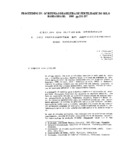Ciclos da matéria orgânica e dos nutrientes em agrossistemas com cacaueiros
Description
27 páginas, 9 figuras, 3 tablas, 27 ref. Sum. (En,Pt)
Abstract
A basic model to describe the organic matter and nutrient (N, P and K) cycles in permanent tropical crops is presented. The model is applied to the cultivation of cacao, which, being a sciophilous plant results in models of several layers. The information presently available is limited the accumulated reserves of the production system and in the exchanges between the biotic (plant parts/harvests) and the abiotic (soil, rainfall, percolation) components of the system are the most outstanding. In the case of nitrogen, the symbiotic fixation processes, which have been hardly studied so far, are also considered. In an example of cacao planted under an Erythrina sp. reserves are the following: (kg N ha exponente -1): Poró 263,5 cacao 102,8 litter 110,8 and mineral soil 9556. The following exchanges were considered in this system (kg N ha exponente -1 year exponente -1) natural residues 327,8 pruning residues 112,2 harvest residues 12,8 rainfall 5,0 fertilizers 120,0 seed harvested 16,2. These values are compared with those obtained in other associations (Loureiro, Cordia sp.) and with those obtained in other countries like Venezuela, Brazil and the Cameroons. Phosphorus mobility in the system studies is small. During 45 years of cultivation 35,2 kg P ha exponente -1 were accumulated the P reserves in the soil reached 3241 kg ha exponente -1. Certainly, potassium is a natural limiting factor in the efficiency of cultivation. Its accumulation in the vegetation is 35 kg ha exponente -1 in comparison with an exchangeable reserve in the soil of 439 kg ha exponente -1.
Publisher
Centro de Pesquisas do Cacau, Bahia (Brasil) Sociedade Brasileira de Ciencia do Solo, Londrina, PA (Brasil)
URI (Permanet link to cite or share this item)
https://repositorio.catie.ac.cr/handle/11554/780Collections
- Publicaciones y documentos [4416]


